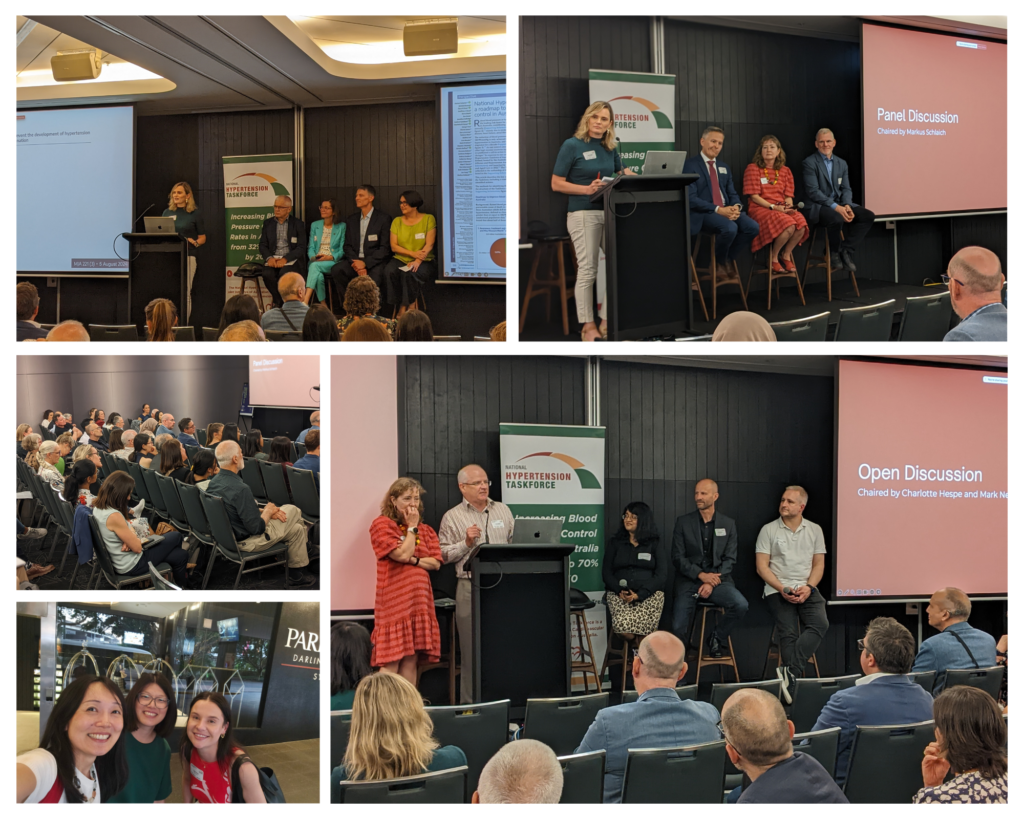The inaugural National Hypertension Summit 2024 was held last Tuesday November 26 in Sydney.
The Summit served as a powerful reminder of the critical role collaboration plays in addressing hypertension. Speakers from across the sector shared candid insights into both the challenges and the opportunities in improving blood pressure control.
The Honourable Mark Butler Minister for Health & Aged Care delivered an opening address saying, “Real change requires unity and coordinated action from all corners of the healthcare system. Summits like today are crucial for maintaining focus, building momentum, and ensuring we stay on course because high blood pressure is a modifiable risk factor. We can get the uncontrolled back under control – saving lives and preventing chronic disease.”
You can watch the Minister’s complete speech above.
We were privileged to hear from three inspirational keynote speakers.
Michael Rakotz, Group Vice President of Improving Health Outcomes at the American Medical Association, shared valuable lessons from the U.S. journey to strengthen blood pressure control. He highlighted the importance of a coordinated national approach and expressed his optimism about the National Hypertension Taskforce.
Michael Wright, President of the Royal Australian College of General Practitioners, discussed Australia’s chronic disease burden, the role of general practice in blood pressure control, and the importance of keeping patients at the heart of care.
Charlotte Hespe, an academic and general practitioner, offered an honest and passionate perspective on competing priorities and the moving parts involved in running a practice and implementing blood pressure control.
The National Hypertension Taskforce has set the ambitious goal to increase blood pressure control rates in Australia from 32% to 70% by 2030. Since the launch of the National Hypertension Taskforce Roadmap, earlier this year, 5 working groups have been established. During the afternoon sessions we heard updates and progress from:
- Working Group 1 – Developing up-to-date, simple BP management tools for healthcare providers
- Working Group 2 – Increasing patient activation and engagement
- Working Group 3 – Raising and maintaining awareness at all levels
- Working Group 4 – Establishing a systems and data-based approach to blood pressure management
- Working Group 5 – Improving detection (screening) of people with elevated blood pressure to identify those at risk
The final session shared recent updates and research related to the National Hypertension Taskforce’s goals. These included:
- Update the Australian Hypertension Guidelines? When, how, who?
- A health economic evaluation on potential savings related to stroke when improving BP control from 32 to 70%. How to go about it?
- Current costs of hypertension for Australia, and potential savings by implementing single-pill combinations.
- Meta-analysis on prevalence, awareness, treatment and control of hypertension in Australia and the contribution of raised blood pressure to the burden of disease and deaths in Australia from 1990 to 2019.
- A global strategy to scale-up potassium-enriched salt use.
The Summit was a truly impactful day, made possible by the contributions of many dedicated individuals. We extend our heartfelt thanks to all the speakers, presenters, and panellists, as well as the organising committee and members and organisations of the National Hypertension Taskforce. We are also deeply grateful to the National Hypertension Summit sponsors, ACvA, Servier, and UNSW.

